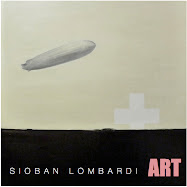During the past month I volunteered at the previously discussed Art Loop Open. On Friday a couple of fresh, young journalism students interviewed me based on my role as a participating artist. The interview was not planned and I had to think fast on my feet to respond to their questions.
Of course, there was the usual question, ”How has the experience of participating in this event been valuable?” I responded that I had not encountered any of the benefits that can be analyzed with metrics valued in the marketing community. There had been no increased traffic to my website, nor any inquiries about my work. What had occurred was the opportunity to meet and interact with some remarkably talented, smart people. Having moved home from New York in June, I have been missing “my tribe”. Now, I am starting to assemble one, and for that I am extremely grateful.
Next, one of the students asked about the value of art in public spaces and the justification of installing that art with taxpayer dollars. To the first part of the question, I believe that publicly installed art allows people to view it in a familiar environment. Many people outside the cultural sphere like art, but are intimidated by the rarified air of commercial galleries and/or the expense of museum attendance. Encountering art “out in the world” demystifies it and enhances our rather mundane, day-to-day experiences.
As for the taxpayer dollars, every day I hear individuals bemoaning the fact that all manufacturing jobs have gone overseas. Certainly, not in the arts. Consider the Creative Economy. It includes advertising, architecture, art, crafts, design, fashion, film, music, performing arts, publishing, R&D, software, toys and games, TV and radio, and video games. Adjacent to the Creative Economy exists the Cultural Economy. It’s composed of cultural tourism and heritage, museums and libraries, sports and outdoor activities.
The creative process is one of intellectual and material problem solving: How can I make something that successfully conveys an idea or enhances day-to-day life. It is also one of the few generators of manufactured goods made in the United States. As a painter, I make things. The materials I buy to make these things are purchased at local hardware and art supply stores. Most of the materials I purchase are made in the United States. When I advertise or publish information about my work, the materials are printed in the United States. When the objects I manufacture are sold, they are sold by an organization that employs people in the United States. And I am just one painter.
All of this is food for thought as government is repeatedly asked to stop spending in the arts and schools drop arts education. It has been demonstrated that students exposed to music early on, develop acuity for math and science. We spend millions of dollars creating young business people, only to send them to so-called creative workshops once they are employed. That stupid, overused catchphrase, Think Outside the Box keeps reverberating. The only box that exists is one that we have, as a society, built.
Artists are not a curiosity. Perhaps we can adjust our thinking and see the value in our creative community. Perhaps we can understand the investment in it. Perhaps the MFA is the new MBA. After all, look at where those MBAs …forget it.
As to that new political faction causing so many problems, remember, somebody designed that tea bag.
Interesting sources:




No comments:
Post a Comment